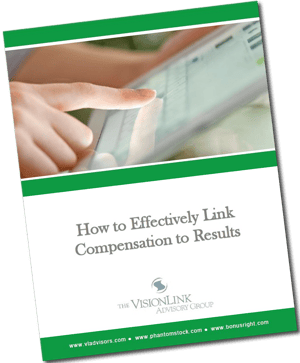How Has Your Compensation Offering Changed in the Past Two Years?
September 01, 2022 • By Ken Gibson

Are your employees still participating in the same pay package your company was offering in 2019—before the lockdown? If so, it could be the reason so many of your people are leaving—or are about to. Employee expectations are changing on rewards, compensation and benefits issues, and many are exiting current positions if another company is willing to meet them. Here is what research at PwC has revealed:
“…Over the past decade, what people value in terms of [compensation and] employee benefits packages has changed, even though the fundamentals of corporate rewards have not. Year after year, most employers offer the same menu of choices—health benefits, pension contributions, gym memberships, cash incentives—without bothering to ask employees which ones they prefer and which ones they value most highly.
“Such complacency has costs. If companies were to ask [their employees] whether the rewards they offer make a difference, they’d get a shock. Today’s workforce is more diverse than it used to be, attitudes toward work are evolving, and employee preferences are changing. And the speed of that change is only accelerating in the post-COVID-19 world. We know this because for ten years we’ve been collecting data—more than 50 million data points from more than ten million surveys undertaken with global companies—on the trends in employee preferences for financial and nonfinancial benefits, and how much value employees place on them. What we’ve found makes it clear that it’s time to rethink the approach to rewards.” ("Rethinking total reward strategies," Strategy+Business, July 27, 2021, Andrew Curcio and Alastair Woods)
Most company leaders would be willing to consider a different approach to compensation if they knew what it should look like and how it should be structured. The starting point is understanding that a rewards strategy must be effectively linked to results. When it is, it will help an organization achieve one or more of the following outcomes:
- Solve a problem
- Remove a barrier
- Encourage superior performance
- Reinforce a role, process, pattern or cycle
- Focus and unite the workforce’s efforts
- Define priorities and reward the achievement of targeted outcomes
Each of the things you see listed are factors that unleash growth in a business. And that’s what compensation should do—enable growth and sustained success. It should facilitate that outcome instead of inhibiting it, which happens all too often. Embracing this view is essential for company leaders who want compensation to become a strategic tool that drives key results for the enterprise.
All of this suggests that the development of an effective pay offering must start with the identification of the key outcomes the company needs to achieve to fulfill its growth expectations. Once those outcomes are clear, then company leaders can essentially work backward to determine the plans most likely to enable the achievement of those results. That's what the heart of a "pay for performance" strategy really is in modern business. For example, if a key outcome a company needs to achieve is three times revenue growth in the next four years, then it should have some kind of long-term incentive plan that reinforces that priority, such as phantom stock or a profit pool. Who should participate in the plan? Those whose role is most directly responsible for achieving the targeted result.
With that in mind, let's consider how a rewards strategy should be viewed and developed to meet the demands of the current business environment.
Compensation Offerings in the New Economy
In the modern economy, a company's compensation strategy should be viewed as a combination support structure for the core functions of the organization and "rocket" fuel for the growth trajectory of the business. In its support role, it should provide clarity to employees about the results their roles exist to produce. Its "rocket" fuel function is to ensure that key employees maintain their focus on the development of the future business without neglecting the results that need to be produced in the next six to 12 months. Peter Drucker referred to this as "keeping one's nose to the grindstone while lifting his eyes to the hills." He meant that every business has to operate in two modes at the same time: producing results today and preparing for tomorrow.
To achieve both its roles, new economy compensation should be tightly linked to value creation. This will be defined a bit differently for each organization. But the idea is that every company must identify a threshold of company performance (typically a profitability or revenue target) that must be achieved before employees will share in the financial fruits the company is producing (i.e. receive any kind of incentive payouts). At VisionLink, we refer to this as a wealth multiplier pay philosophy.
Under this philosophy, as employees drive up the wealth multiple of the company (past a threshold needed to protect shareholder interests and support company growth), they will participate in the value they have helped create. This benefits owners by ensuring business value isn't diluted by overspending on performance results while simultaneously ensuring their workforce is focused on driving company growth. Employees benefit because they can drive more income and wealth creation for themselves by helping the company achieve the value creation threshold it has set. If constructed correctly, a rewards offering rooted in a wealth multiplier philosophy can promise employees unlimited earnings potential. This is because as the combined efforts of employees drive up value creation within the business, the company's ability to engage in value sharing increases along with it.
Therefore, to create a pay offering that meets the demands of the times we are in, a business should approach the development of its pay strategy in the following sequence:
1. Define Value Creation. This is the process of identifying the wealth multiple threshold just described.
2. Articlute a Clear Pay Philosophy. This is a written statement that spells out the rationale for how employees are paid. (The best rationale is one that ties a significant portion of earnings to value creation.) The pay philosophy should be communicated to employees with an emphasis on the kind of performance that will be rewarded.
3. Share Value Instead of Paying Incentives. This is not simply a difference in nomenclature. Value sharing is tied to value creation. Incentives are usually tied to behaviors and individualized metrics.
4. Build a Balanced Pay Offering. A compensation offering that is balanced has the proper proportion of guaranteed and variable pay (salaries and value sharing) and rewards for short-term versus long-term performance (value creation).
5. Communicate a Growth Partnership. If company leaders want their employees to act as true growth partners in building the business, they must treat them as such. Therefore, an organization's pay offering should clearly define the financial nature of the growth partnership the company wishes to have with its employees.
In the new economy, everything a company does must have a strategic purpose--meaning it must empower the company to execute its growth strategy. For too many years, leaders have seen compensation as a necessary evil; an expense that needs to be contained as much as possible. In today's environment, it must be seen and treated as a strategic tool that can empower the enterprise to achieve its most lofty goals. It must be the central element in an employee value proposition that is complete and compelling.
To dive deeper into how to develop a pay offering suitable for the new economy, download VisionLInk's free report, How to Effectively Link Compensation to Results.
Ready to Get Started?
When it comes to building a compensation strategy, you can trust that VisionLink knows what works and what doesn’t. We are ready to share that knowledge with you.
Stay Connected
Receive free, ongoing access to updates on compensation and talent trends, reports, events, and more.



